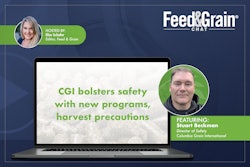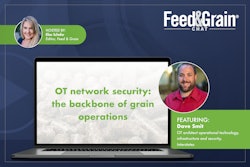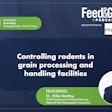
Ask any economist today and they’ll likely say, “The economy is strong.” Indeed, economic indicators back this up. Over the past few months, the annual inflation rate has hovered at 2.4%, unemployment is at 4.1%, and strong wage growth has preserved workers’ purchasing power despite rising prices. Meanwhile, the Federal Reserve’s recent interest rate cuts, with hints of further reductions, have created opportunities for individuals and businesses seeking to borrow for growth. The annual GDP growth rate stands at 2.5%, and the stock market has reached new highs multiple times over the past year.
However, these figures represent macroeconomic trends. They don’t necessarily reflect the circumstances of specific industries, businesses or regions. Your feed and grain business, for instance, might face unique challenges despite the overall positive economic outlook. You may be grappling with higher wage costs to attract and retain employees or managing debt incurred when interest rates were higher. Furthermore, local or sector-specific economic pressures, such as fluctuating demand for certain agricultural products, could affect your operations.
Managing during a strong economy
Interestingly, management literature tends to focus more on navigating tough economic times than on thriving in good ones. Yet, strong economies also demand strategic adjustments to ensure long-term success. During times of growth, complacency can be a hidden risk. It’s essential to remain proactive, continuously evaluating your operations and implementing strategies that maximize profitability while preparing for potential downturns. Here are some areas to consider for your feed and grain business:
1. Cut costs
Evaluating your business for cost-cutting opportunities is always a smart move, especially after periods of inflation. Now is an ideal time to reassess operations for efficiency and identify areas where expenses can be reduced without sacrificing quality or service. Strategies include:
- Negotiating better terms with suppliers or exploring new options that could lower costs or improve delivery efficiency.
- Upgrading to energy-efficient systems, such as modernizing HVAC systems or installing energy-efficient lighting, to reduce utility bills over time.
- Outsourcing non-core services to specialized providers that can offer more cost-effective solutions.
- Investing in technology, such as automated inventory management systems, which can streamline operations, reduce human error, and improve customer experiences.
Beyond immediate cost reductions, consider long-term strategies that promote sustainability. For example, adopting environmentally friendly practices, such as recycling or reducing waste, may qualify your business for tax incentives or enhance your reputation among environmentally conscious customers.
2. Diversify revenue streams
Examine your sources of revenue and explore diversification opportunities. By building varied revenue streams, your business can better withstand downturns in specific areas. A diverse portfolio ensures that strong performance in one sector offsets weaker results in another. Ask yourself:
- Can you introduce new products or services that align with your existing capabilities?
- Are there untapped markets, such as online sales or new geographic regions, that you could enter?
- Would forming partnerships or collaborations with other businesses help expand your reach or offerings?
For instance, a feed and grain business might explore selling niche products, such as organic or specialty feed, to cater to growing consumer demand for sustainable agriculture. Alternatively, consider adding value to existing products, such as offering packaged feed with nutritional additives designed for specific livestock needs.
3. Invest in employees
Low unemployment and rising wages make employee retention critical. To be an attractive employer:
- Enhance training programs to upskill your workforce and prepare them for new technologies or processes you plan to implement.
- Revisit benefit packages to ensure competitiveness in your local labor market. Consider offering perks such as flexible scheduling, wellness programs or additional paid time off.
- Cultivate a positive work culture that prioritizes open communication, recognition of achievements, and opportunities for career advancement.
Remember, retaining skilled employees isn’t just about salaries; it’s about creating an environment where employees feel valued and supported. Investing in your workforce can lead to higher productivity, reduced turnover costs and better customer service.
4. Think strategically for the long term
If your business has available cash, consider making investments you may have deferred, such as facility upgrades, new equipment or technology adoption. Monitor interest rates closely and act when they align with your financial goals. For example, a feed and grain business could benefit from investing in storage solutions that reduce spoilage or in digital systems that streamline order management.
Strategic planning isn’t just about physical assets — it’s also about preparing for future challenges. For instance, consider how changes in government policies, trade agreements or environmental regulations might affect your industry. Staying ahead of these shifts can provide a competitive edge.
5. Leverage data and analytics
Stay informed about macroeconomic conditions and your business’s performance metrics. Data-driven decision-making is no longer optional — it’s essential for maintaining competitiveness. Develop dashboards with key performance indicators (KPIs) to monitor trends and adjust your strategies proactively. Examples of useful KPIs include:
- Profit margins by product or service line
- Customer acquisition costs and retention rates
- Inventory turnover rates
- Employee performance metrics
Regularly reviewing this data allows you to identify areas of concern early and make timely adjustments, whether it’s reallocating resources, revising pricing strategies or addressing inefficiencies.
Adapting to the current economic landscape
Managing a business requires constant vigilance and adaptability. Even during a strong economy, businesses face unique pressures, such as higher labor costs, increased competition and inflation-driven expenses. However, these times also offer opportunities to strengthen operations, invest in growth and prepare for future challenges.
By focusing on strategic cost management, diversifying revenue, investing in your workforce, and leveraging data, you can optimize your business’s performance while preparing for any economic shifts ahead. Remember, the key is to remain agile, ready to adapt your strategies as conditions evolve.


















